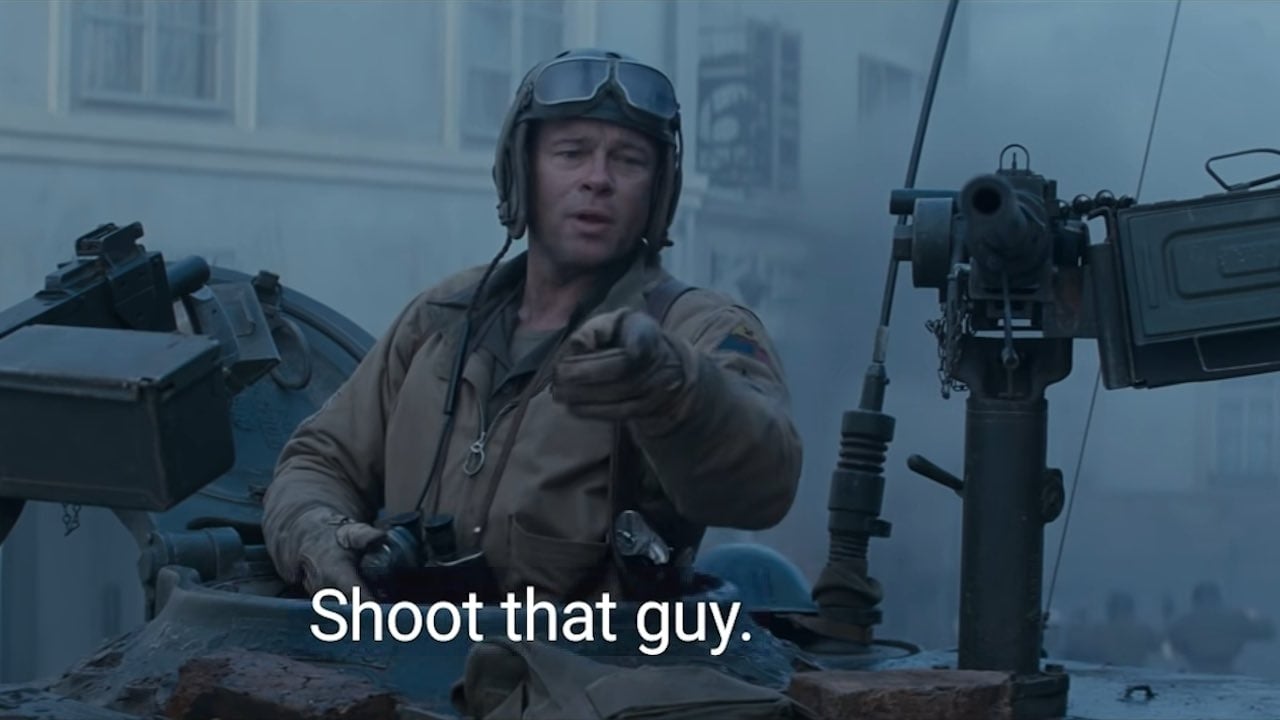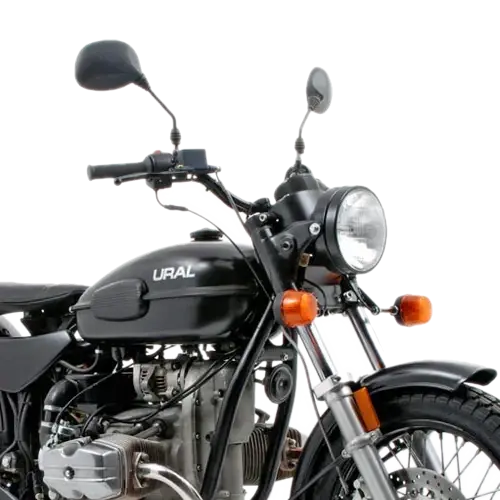meanwhile in legally distinct dragon game: Hmm yes I will dip fighter for access to a lv 4 reaction strike on every single character i make.
Also in legally distinct dragon game: Watch in amazement as I use my staff/dagger/rapier as a shield!
Dont forget the dip in fighter in 5th that allows you to use action surge on a caster. So good its banned at the table I play at
Back in my day we got an extra attack at 6th, 11th, and 16th level, and each one was at a cumulative -5 penalty, AND WE LIKED IT!
I’m still living in those days.
I would be, but one of our friends has decided that 5e is the only system he wants to play, and we all love him too much to play without him. We don’t hate 5e, we just don’t love it.
My friends are afraid of Pathfinder character creation because there are too many options (especially feats,) but I drag them through it anyways.
Ironically he hates playing it because of all the extra rules, but loves creating characters because of all the extra rules. Writing that out I think I just realized if I take out BAB progression and replace it with proficiency bonuses and have multi attack rules just be 5e rules I think all his issues would evaporate.
I usually offer players with multiple instances of extra attack a +1 to their to hit, and Im considering offering +1 crit range as well. This is a real sticking point to me in 5e, the lack of viable build variety.
Im considering offering +1 crit range as well.
Champion fighters in shambles right now
I mean, their +1 would stack. Crit range expansion was a big part of the game in 3.x. That game had you crit confirmation, and 5e makes it easy to get advantage, but I literally do not care.
Champion is also a badly designed class, it could have had maneuvers for a teensy bit of complexity, but they needed a “newb” subclass, paving the way for conceptually elemental subclasses with no mechanical complexity at all (note that the wizard didn’t get hit with any of this).
Paths do not find this.
Not going to lie, I’m already taking notes. I like that in general, if you make the right choices, it’s easy to make even wizards feel a lot less squishy, which would make me feel a lot more comfortable not pulling punches in my game. One of my favorite changes so far is the wild shape recharge on short rest for druids.
It’s gotten me thinking about how to fix some other broken classes again, like making Ranger not fucking suck, and fixing the MADness of Barbarian. Fight me IRL, having the Barb’s unarmored defense dependent on dex instead of strength is dumb as hell when the barbarian is clearly a STR/CON class, that would be like having the Monk’s unarmored defense being dependent on Constitution. “So, what, Barbarians should just deflect attacks by flexing extra hard?” Yes.
Ummm… Barbarian Unarmored Defense is based off Con, not Dex. They just didn’t take away the default Dex bonus to AC that every class in the game gets. They shrug off damage by having a high Con. Barbarians are pretty good as it is, if you let them completely dump Dex and give AC from Str, they would be broken AF… 18 AC at level 1 with a shield under point buy system, and immediate jump to 20 AC at level 4, with no reduction in damage output at all. Possible to be 20 AC at level 1 literally completely naked (no shield) with rolled stats, and 18 isn’t even entirely unlikely…
The reason that it’s broken (in a bad way) as Dex+Con compared to the Monk’s Dex+Wis unarmored defense is that monks absolutely CAN get broken as fuck AC from Dex + Wis, especially as the game goes on. Kinda on a related note, in BG3 I re-specified Astarion as a thief/monk, gave him a few mid-tier magic items, and now he’s my front-line tank with an AC of 21 at level 7. No sane Barbarian PC is going dex barb, so realistically the barbarian’s unarmored defense is going to cap out at AC 15-16 minus shield (which, come on, what barbarian won’t be rocking two handed weapons?). So, while the Monk gets unarmored defense based on both of its chief stats, Barbarian gets unarmored defense based on just one of its chief stats.
Having a barbarian with a broken AC to start with doesn’t bother me too much, but then I also tend to not run gritty/from dark style games, and that’s also bearing in mind that the martial classes don’t really scale as well as the casters do after level five. Giving the barbarian a ludicrous AC to aspire to at high levels might help balance that out.
Monks still require to have Con to be viable.
While a Barb wouldn’t require to have Dex in any way.
All classes are designed to have the need of at least 3 stats.
You are talking about removing Dex bonus to AC, which every class gets, to make Barbarian able to completely dump 4 ability scores and not even need items (at least a fighter needs nearly 1k gold to get into heavy armor that will compete with this barbarian completely naked). Barbarian is not broken in a bad way currently compared to any other martial. A monk might keep up with AC, and maybe even damage output (but I’d argue being locked into monk weapons means they won’t) but they’ll have at best 60% of the HP a barbarian has (who is also taking half damage from non-magical sources a majority of the time) and still have to put points into 3 stats to stay relevant.
Also, BG3 is not a great source for comparison… I have a bard at level 5 with a 21 AC. The more “tanky” classes I have played were all around 23 AC at level 7. There are a lot of magic items in the game that stack AC and you are absolutely swimming in them by level 8. Every party I’ve played through by the end game it was 4 characters with 23-26 AC across the board. My wizard was 24 AC (25 if standing in low light) by level 10…
You’re aware that barbs get resistance to bludgeoning, slashing and piercing irregardless of whether it’s magical, right? And that extends further with the bear totem
Yea, I meant to refer specifically to spell damage but wasn’t very clear. But that furthers my original point anyway.
Didn’t druid already get wildshape on a short rest? I do agree that barbarian Unarmored Defense is a bit lackluster though.
I get what they were thinking. Monk gets to add Wisdom because their awareness let’s them dodge, so it should be roughly equivalent to let a barbarian add Constitution because their natural durability makes them harder to hurt. Dexterity being one of the main Ability Scores for monks throws this out the window though
IIRC, Druid only gets two wild shapes per long rest, but it’s possible I’m misremembering because my druid player basically forgot she could do that and it’s been ages since I played one myself.
Druids get two Wildshapes per short rest. Players just tend to not take short rests because they’re not really incentivized. I know this because I read through the druid features more than my druid player did
Ohhhhhhhhhhh, yeah, okay. Neither myself (when I play) nor my players take short rests. Death before short rests, for some reason.
What could go wrong if a class with the most hp and that halves the incoming damage also had extreme AC naked?
They are supposed to be a tank.
That said, Barbs shouldn’t have that high an AC since their rage requires them to either attack or get damage. So a high AC would force them to only attack or lose their rage.
TBF the only class that gets more than one extra attack is the fighter.
Now of course it would make sense to sum up the levels you have in classes that get multiattack, and if you have >=5, you get an extra attack. But since attack progression is far less regular than spell slot progression, getting something approaching regularity beyond that would be difficult.
Now if OneD&D wanted to boost martials and introduce some sort of a multiattack scaling across multiclassing, here is how that could work:
- Introduce features called Special Attack and Signature Attack. (Simply because just stacking extra attacks in a way that gives a bunch of half-casters extra attack at level 5-6 would give full martials a ridiculous number of attacks per turn at higher levels.) Special Attack is an attack that deals double weapon damage (which stacks with crits), but other extra damage sources like smites don’t get doubled. Signature Attack is a Special Attack that can also force a save, either a STR save vs. being disarmed, a DEX save vs. being knocked prone, or a CON save vs. being dazed. You pick which one when you get the feature, and you can change it on level up.
- Introduce an attack progression table which details how many regular and special attacks you get per warrior level. (IDK if Lemmy’s MD syntax allows tables in lists, so see the table below.)
- Like for spell slots, some classes (fighter, barbarian, monk) count as whole classes, others (paladin, ranger, artificer) count as half, and some caster subclasses (bladesinger, swords bard, hexblade, etc…) count as third.
The table:
Warrior Level Normal attack Special attack Signature Attack 0 1 - - 3 2 - - 6 1 1 - 9 2 1 - 12 1 1 1 15 2 1 1 18 1 2 1 So:
- A level 12 single class fighter gets 1 normal, 1 special, and 1 signature attacks.
- So does a fighter 6 / barbarian 6.
- A level 12 paladin counts as a level 6 warrior so they get a normal and a special attack.
- A fighter 6 / paladin 6 counts as a level 9 warrior, 2 normal attacks and 1 special attack.
TBF the only class that gets more than one extra attack is the fighter.
That’s true, but other martial classes either get or already have features that increase the base damage of their attacks somehow, usually by or around 11th level, in order to roughly keep damage parity (granted, it’s a stretch in actual play, but it’s possible to see the workings - Barbarian has rage damage/reckless attack/brutal critical, monk has martial arts/fob/damage die increase to d8, Rogue has sneak attack, ranger has Favored Foe, paladin has smites, etc.)
The problem is, extra attack does not stack with itself, so a 5/5 martial has at least one dead level if both classes get it. That’s not true of a 5/5 in two full spellcaster classes (excluding pact magic,) who in addition to getting higher circle spell slots from both classes, have access to 3rd level spells from each of those classes.
It bothers me a little because this was solved in 3.0 with BAB - you added the maximum bonus from each class, and you would get a number of attacks according to the multiples of 5.
Fractional BAB wins again. I like D&D 5 just fine but for stuff like multi-classing and creating really complex builds D&D 3.5 is the superior system.
Just saying, the cantrip gets more powerful but you just get one. I would prefer smaller cantrips but more of them like eldritch blast. So more sword swing is decent
@Golett03 hot take: cantrips ruined spellcasting. Spells should take spell slots unless they are a ritual or granted by a magic item. If I could go back in time and make cantrips not a thing, I would
Hot take: cantrips are fun and give new players exciting stuff to do and there’s absolutely nothing even remotely fun at all about keeping track of how many casts you have.
I think some very basic things, like prestidigitation, are fine. Basically magical effects that a child might do by accident but controlled through experience. Damaging spells? Probably not. Essentially, if it adds flavor to knowing how to manipulate magic, fine. If it grants power, it’s probably not a good contrip.
@Cethin pretty much every centripetal worth taking either deals damage, give combat advantages, or has a very useful effect like Light.
Essentially my hot take is that even Prestidigitation and Light should be a 1st level spell. Especially Light.
Totally agree light and damage spells should be.
Prestidigitation like effects I think are probably actually good to just let every spell caster (or at least wizards and probably sorcerers and warlocks) have. Things that don’t do anything critical, just give flavor that they understand how to control the weave. Just like a fighter probably has better control of their body and can do extra flourishes, a spellcaster can do minor flourishes of the weave. Prestidigitation might still be more powerful than what I have in mind even, but the idea is about right. Basically they’re able to create sparks, budge things, create a tiny bit of wind, or other very minor effects without expending much energy. Nothing actually useful to do anything except to say they can do things.
in dnd 5e
Can you elaborate? I really only have experience with 5e
Martial hybrids are fun and good in other systems. In D&D 3e, for example, its the complete opposite situation; martials can pick up cool tricks like dual wielding while progressing their accuracy and health, whereas casters lose a level of spell progression and gain a second track of spell progression thats about as strong as a lv 1 character
Tbf, in 3.5 casters learned the same spells at different levels so they weren’t exactly compatible. Martial classes mostly relied on feat picks and BAB (for extra attacks) while their individual features weren’t really shared by other classes
Spellcaster doesn’t get spell of higher level in this case, only spellslot. A martial still get the proficiency up.
Casters also get proficiency up, that depends on total character level.
And higher spell slot levels still increase the character’s damage output and specific utility. Some spells - such as Cure Wounds or Hold Person - are pretty much designed to be upcast, and some others (e.g. Heat Metal) are unexpectedly great. Someone with Bard 3 / Sorcerer 4 might only have second level spells, but a level 4 Heat Metal vs. a heavily-armored target deals 4d8 per turn without a saving throw for up to 10 turns.
In the case of heat metal the better effect is the disadvantage it gives to the victim. 4d8 is not much. A lvl5 martial does this with a rusty one handed weapon, without a spell slot, two less levels, and I resource whatsoever.
And then most lvl4 spells are much more powerful or much more useful.
Multiclassing before lvl5 is usually a bad idea. You can twist the problem how you like, that’s how the game is designed.
Take a paladin 4/fithter 3, and any smite will do much, much more than your heat metal. A champion 3/berzerker 4 (you must be really stupid to do that) will still do much, much more than your heat metal. And he will be able to do it as many time as you will.
Read the spell description.
Sure, 4d8 in itself is not much, of course. 4d8 per round as a bonus action for 10 rounds with a single spell slot, however, is a lot, especially at a level where a paladin only has second level smite slots. Which is why upcasting heat metal can be extremely powerful. (And it gives disadvantage for those 10 rounds, and there’s no saving throw or attack roll involved. If you’re wearing metal armor, it will fuck you up. And if you happen to be resistant or immune to fire, well, that bard 3 / sorc 4 might have transmuted spell.)
I know the spell. I told you. Two attacks with a longsword from one hand will do more damage than that. I’m talking about a bland longsword and no ability whatsoever on top.
On average, an ability modifier of +4 is about a d8, and +5 is about a d10. 2 longsword attacks make 4d8. 2 2hander attacks make about 5d8. That’s without any resource invested.
You’re telling me that your awesome spell requires a lvl4 spell slot that you have 2 in the day to do less than any lvl5 martial would do without expanding any resources. And you need your enemy specifically to wear a metal armor, or your spell does about nothing.
I know the spell. I told you. Two attacks with a longsword from one hand will do more damage than that.
4d8 for ten turns is on average 180 damage. For one bonus action, total. Two one-handed longsword attacks even at +5 assuming you never miss is 19 damage average. If they want to keep doing that they will have to expend their action every single turn. I have no clue why you assume the wizard is going to just take a coffee break after applying heat metal instead of using their actions to deal further damage every turn it’s active. The wizard wins out massively.
I have no idea what you’re smoking but I want some too.
(Minor correction, wizards have no access to heat metal. It’s only available to druids, rangers, and bards. But at level 7 wizards have access to Conjure Minor Elementals, which can summon 4 magma mephits and they each have one daily casting of heat metal.)
Yep. While the bard-sorcerer maintains that level 4 heat metal, they can also do 2d10/turn with fire bolts if they don’t want to expend additional spell slots. Also assuming that all of those hit, that’s 110 additional damage beyond the 180 from the heat metal.
If your enemy lives through 10 turns under heat metal you’re not really fighting it… Your assumptions are so delusional it’s hilarious.
4d8 + cantrip, other spell or even melee attack every turn is still considerably more damage than 1d8+5 per turn, whether they do that for one, two, three, …, or ten turns.
At this point you have yet to make one cogent claim on the subject so I’m going to assume you’re trolling on purpose and will not engage you further. Have a good day, sir.
I’m curious as to how quickly BG3 rule changes will start making their way into tabletop house rules and 3rd party supplements.
My guess is pretty quickly, if my own group is any worthwhile measurement.
Yeah. Larian made some really good changes to D&D, then they added crit fails to skill checks
then they added crit fails to skill checks
Do you know how many times that has pissed me off? Especially on my rogue where even a 1 would have opened the damn lock.
Yeah, as DM I’ve always house ruled that it didn’t make sense for a character to fail at the thing they’re the best at.
Though I have been known to interpret a natural 1 as a crazy external force - like an earthquake - and have them reroll at -10.
Makes it even more fun when they succeed anyway.
[nervous sweating] I’ve always run my game with crit fail skill checks. That’s normal.
Isn’t it?
Isn’t it?
It’s the second shittiest common house rule, assuming you mean that if someone with a +15 bonus rolls a nat 1 on a DC 5 check, they automatically fail (possibly with a worse effect than if someone with a -1 rolled a 2).
On the other hand, there are other ways to have crit fails on skill checks that are much more palatable, like:
- having a slightly worse effect when someone rolls a nat 1 and would have failed anyway
- having a worse effect when someone’s total is 1 or lower
- having a worse effect when rolls are failed by certain thresholds, like by 10 or more (potentially, but not necessarily, only when the roll was a nat 1)
(The worst common house rule, btw, is crit miss tables for additional effects beyond an automatic miss when you roll a 1 on an attack roll.)
If a 1 is not a fail, why do you roll at all ? I mean if the DC is 5 and you have +15, your DM should just not make you roll (* you pass automatically). So a 1 should always be a fail.
The DM doesn’t necessarily have your modifiers memorized and asking what they are every time slows down play. The DM also likely doesn’t want to share the DC. The easiest fair solution is to always ask for a roll (assuming it’s possible, generically, to succeed or fail) and to then consider passes to be passes. If you only avoid asking for a roll when you know the player will make it, then you’re likely to be biased toward the players whose characters you’re more familiar with.
So a 1 should always be a fail.
RAW this is not the case. From the DMG:
Rolling a 20 or a 1 on an ability check or a saving throw doesn’t normally have any special effect. However, you can choose to take such an exceptional roll into account when adjudicating the outcome. It’s up to you to determine how this manifests in the game.
My experience with having nat 1s being auto fails and is that this results in characters who are “erratically … tragically incompetent” as well as taking away player agency (Nick Brown on rpg.stackechange explained this well). Maybe you and your players like a game like that, but I certainly don’t.
If the DM doesn’t know the stat your character has the highest in and uses all the time, they have an awful memory and shouldn’t really DM.









